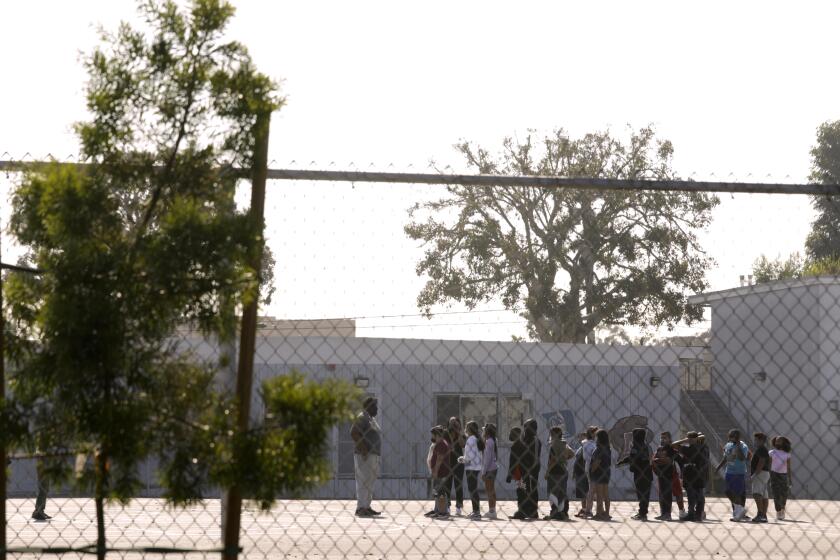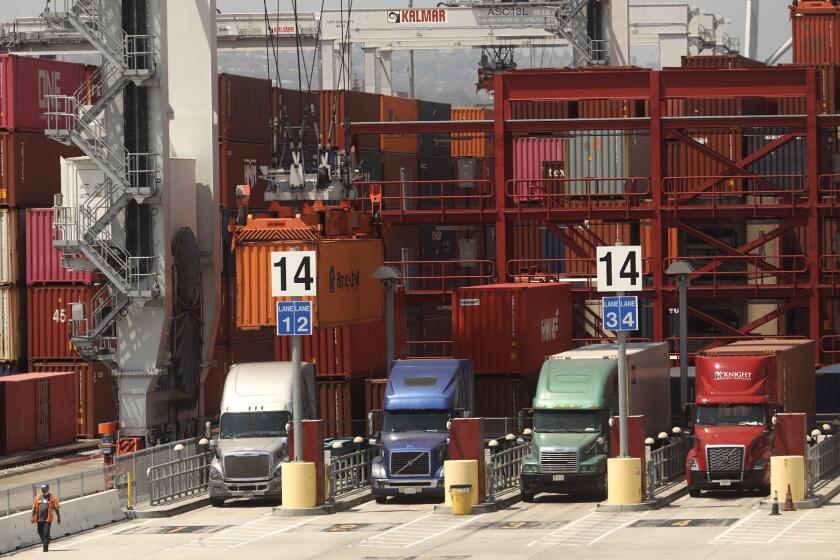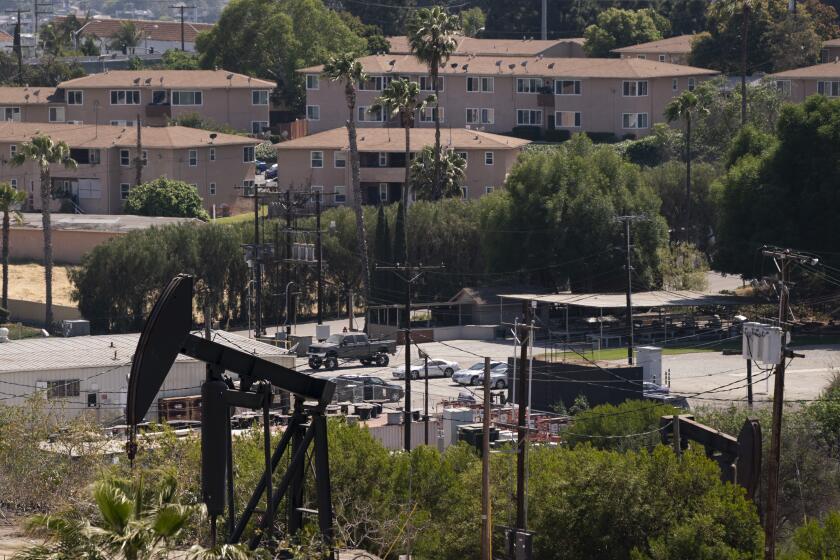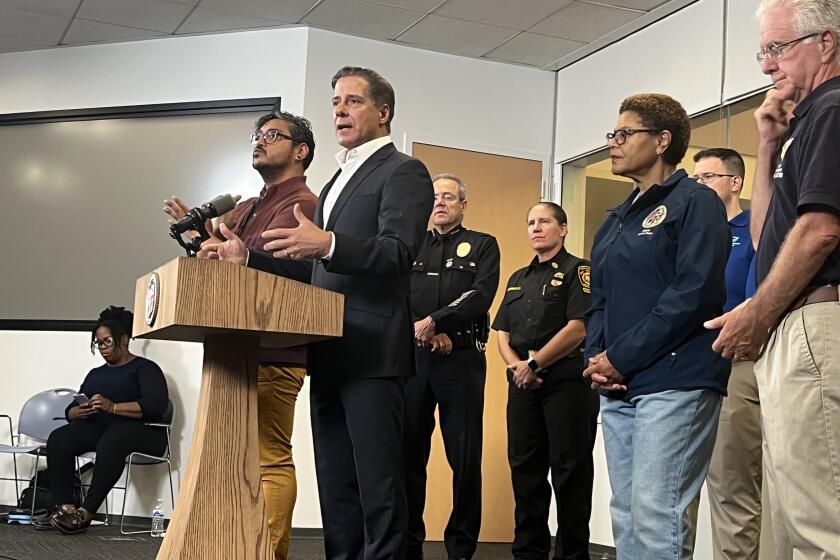Opinion: How California schools can finally quit burning fossil fuels
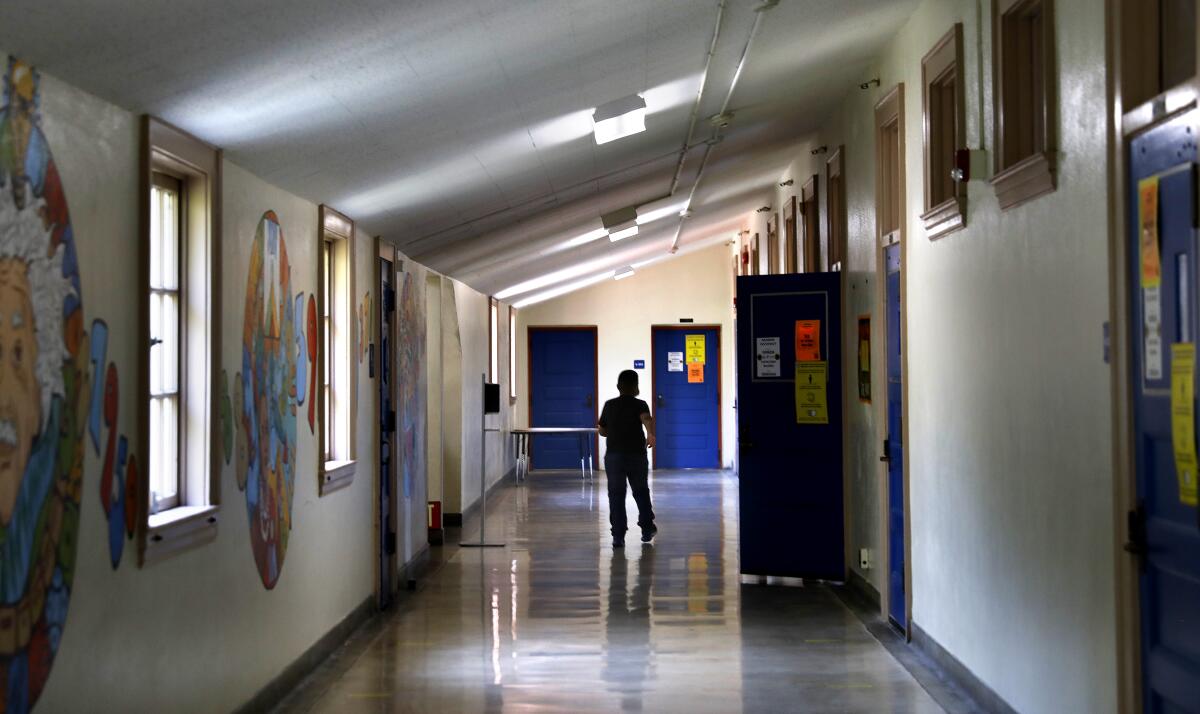
- Share via
From kindergarteners to high school seniors, millions of young Californians are back in the classroom. As parents in the state, we want our kids to thrive in healthy, modern learning environments. But California’s school buildings have some major problems: They’re old, polluting and fail to protect students from the worsening climate crisis.
The majority of our school buildings were designed for a California where triple-digit heat waves, wildfires and superstorms struck less frequently. And because our schools still use fossil fuels, they’re actively creating pollution that makes these problems even worse.
All-electric buildings are the solution: They are healthier and more comfortable and don’t create carbon pollution. A new bill, currently pending in the Legislature, would help school districts reach this goal by creating a master plan for healthy, sustainable and climate-resilient schools in this state. Coupled with a school bond bill on the horizon and new public dollars to go electric, California can prioritize students’ health and ditch fossil fuels by fully electrifying our campuses.
Climate change is causing dangerous heat during the school year. The state should make sure districts with the fewest resources get protections.
Right now, the vast majority of our state’s schools use fossil fuels for heating and cooking. This creates indoor air pollution. Modern, all-electric buildings are better. Electric heat pumps can heat and cool a school, providing much needed air conditioning to sweltering classrooms. Modern filtration systems remove everything from toxic wildfire smoke to pathogens like the coronavirus. But many schools lack functioning HVAC systems, leading to extremely poor ventilation. This is terrible for kids: Improperly ventilated and polluted classrooms can cut student cognitive function in half.
Air conditioning and air filtration don’t just protect students’ health — they also improve learning. One study of Los Angeles schools found that modernized facilities may have prompted achievement gains of as much as 10%.
State regulators set zero-emission rules to clean up the air around ports and rail yards. But clean air in California has always been a Sisyphean goal.
Upgrading and electrifying schools will also help to protect people during disasters. Schools often serve as evacuation centers during events like wildfires. If they are outfitted with solar panels, batteries and heat pumps, they can provide air conditioning even if a brutal heat wave breaks the electric grid.
Additionally, continuing to install dirty fossil fuel equipment in schools is a waste of public dollars. California districts spend $8 billion on building and modernizing school facilities every year. If old gas furnaces like the ones found in most schools are simply replaced with new gas ones, those would likely need to be replaced again before the end of their useful life.
Statewide planning is key to making safe, electrified schools a reality. With more than 11,000 buildings spanning 730 million square feet and more than 125,000 acres of land, California’s school system has a vast footprint. We need a plan now for all these buildings to stop creating pollution, as California law calls for the state to be carbon neutral by 2045.
The Legislature could force more fossil fuel companies to compensate people for cancer and other illnesses in neighborhoods next to wells in Los Angeles and beyond.
In the absence of statewide leadership, some school districts are making their own plans. Earlier this year, the San Diego Unified School District passed a resolution to phase out the use of fossil fuels. The district is now requiring new construction to be all electric, and when fossil fuel equipment breaks it is replaced with clean electric machines. More school districts should follow this approach.
To move forward, Senate Bill 394 must be passed by the Assembly and return to the Senate before the end of the legislative session Thursday, and then sent to Gov. Gavin Newsom’s desk. Just as critically, it needs to be funded. Currently, the Legislature has not budgeted the $10 million needed for the planning process. State leaders must make a plan to fund this program.
More dollars for school electrification could come next year, if Californians are able to vote on a bond that finances schools across the state. If the bond passes, it would provide billions for school infrastructure. But it is crucial that it aligns with the state’s climate goals so that we aren’t putting public dollars into outdated systems.
Health and safety in the school community come first. But as we learned during COVID, that doesn’t mean that we can’t make sure students continue to learn.
We don’t have to wait to get started. Last year, the state Legislature put aside $20 million to help schools upgrade to electric heating, air conditioning and ventilation. The agency tasked with implementing these funds allocated millions more to the effort. Together, these funds will help around 200 schools install heat pumps, providing a model for other schools and districts.
Federal funds can also be used to help schools electrify. The Inflation Reduction Act allocates billions of dollars to construct more resilient buildings, including tax credits that cover 30% of the costs of new geothermal heat pumps.
Children have a right to learning environments that are modern and safe and don’t contribute to the climate crisis. California officials need to use the billions of dollars available to upgrade school infrastructure to slash fossil fuel pollution, prioritizing our students’ health and futures.
Jonathan Klein is the co-founder and CEO of the national climate nonprofit UndauntedK12 and a former schoolteacher. Leah C. Stokes is an associate professor of environmental politics at UC Santa Barbara and an advisor to Rewiring America.
More to Read
A cure for the common opinion
Get thought-provoking perspectives with our weekly newsletter.
You may occasionally receive promotional content from the Los Angeles Times.
